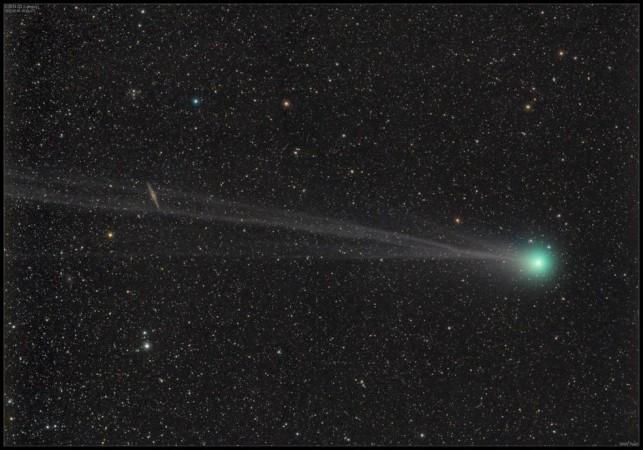
A never-seen-before phenomenon has been observed by NASA scientists: Scientists have observed a change in the way water is produced on a comet.
Also Read: THIS would cause the most fatalities if an asteroid hit the Earth!
The comet called Lovejoy, aka C/2014 Q2, which lies in the Oort cloud, was analysed by NASA scientists from the Goddard Space Flight Center in Greenbelt, Maryland in partnership with Hawaii's W M Keck Observatory on Mauna Kea, according to a NASA statement.
The cohort of researchers examined the comet at infrared wavelengths a few days after it passed through its perihelion — the closest distance to the sun.
The research team focused at the water present on Lovejoy, and calculated the amount of water it released while producing a heavier form of water (2H2O) known as deuterium oxide (also known as HDO), which comprises more hydrogen isotope deuterium.
"A hydrogen atom has one proton, but when it also includes a neutron, that heavier hydrogen isotope is called deuterium," the NASA statement said.
The researchers found a chemical fingerprint by evaluating the D to H ratio; which helped them find out from where these space rocks have originated in the Oort cloud blanketing the young sun during the early days of the solar system.
The D to H ratio also helps in finding out how much of Earth's water has come from asteroids and comets thaat have struck our planet.
These findings were compared with those of another team made before Lovejoy reached its perihelion.
The researchers used ground-, as well as space-based telescopes and detected a difference. It was found that the levels of water remained constant, but the levels of heavy water doubled or even tripled.
"The change we saw with this comet is surprising, and highlights the need for repeated measurements of D-to-H in comets at different positions in their orbits to understand all the implications," said Lucas Paganini, a researcher with the Goddard Center for Astrobiology and lead author of the study.
It was previously believed that the levels of water increased or decreased in tandem, while retaining a constant D to H value, but this new discovery has debunked the old belief.
"If the D-to-H value changes with time, it would be misleading to assume that comets contributed only a small fraction of Earth's water compared to asteroids, especially, if these are based on a single measurement of the D-to-H value in cometary water," Paganini stated.
Compared to water production, HDO generation is comparatively lower, which made it previously hard to measure.
Comet Lovejoy generated 1,500 times more water than heavy water. The brightness of the comet helped researchers in evaluating the value of the HDO as it passed by Earth.
Ground-based telescopes are now being equipped with advanced detectors that will help in taking the water measurements in comets further out.
The alteration in water levels in Lovejoy's D to H is likely to the outcome of an increase in the energetic processes, such as the solar radiation, when the comet was closer to the sun. This may have caused changes in the water present on the comet's surface. The different stages of a comet's lifecycle can also be detected with the help of D to H value.
"Comets can be quite active and sometimes quite dynamic, especially when they are in the inner solar system, closer to the sun," said Michael Mumma, director of the Goddard Center for Astrobiology and co-author of the study.
"The infrared technique provides a snapshot of the comet's output by measuring the production of H2O and HDO simultaneously. This is especially important because it eliminates many sources of systematic uncertainty," Mumma concluded.
This research is also published in the Astrophysical Journal Letters.











